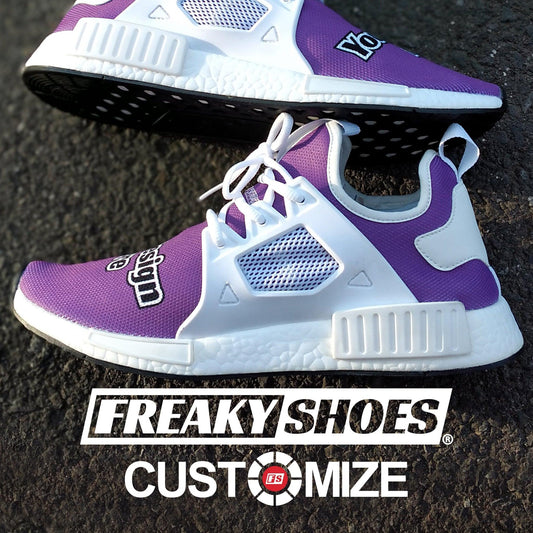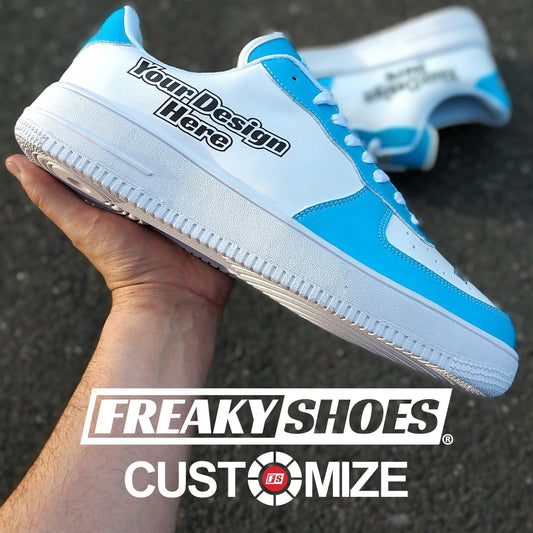Looking for Adizero Prime X 2.0 Strung vs. Nike Alphafly 3 comparison? Here’s the thing: Both shoes promise speed, comfort, and energy return, but they feel completely different underfoot.
We ran hundreds of miles in both. Some runs felt amazing. Others? Not so much. And now, we’re sharing exactly what you’ll experience when you lace these up.
So, which one is faster, more efficient, and race-ready?
-
The Nike Alphafly 3 is the better choice for serious runners. It’s lighter, more stable, and race-legal.
-
But the Prime X 2.0 Strung is a fun training shoe with extra cushioning.
In this real-world comparison, we break it all down—so you know which shoe is right for you.
Key Takeaways
-
Nike Alphafly 3 is lighter than Adizero Prime X 2.0 Strung.
-
Prime X 2.0 Strung is softer but heavier, making it great for cushioned training runs.
-
Nike Alphafly 3’s Atomknit 3.0 upper keeps feet cooler and more comfortable over long miles.
-
Prime X 2.0 Strung’s Strung upper feels supportive but gets warm in hot conditions.
-
Nike Alphafly 3 is race-legal, but Prime X 2.0 Strung is banned in official competitions.
-
Alphafly 3 provides better stability, while Prime X 2.0 Strung can feel wobbly at fast speeds.
-
For training, Prime X 2.0 Strung works well, but for serious racing, Alphafly 3 is the clear winner.
-
Over long runs, Alphafly 3 helps you conserve energy, while Prime X 2.0 Strung feels heavier over time.
Adizero Prime x 2.0 Strung vs Nike Alphafly 3 (Comparison)

We’ve been testing both the Adizero Prime X 2.0 Strung and the Nike Alphafly 3 for weeks. Now, we can finally say that both shoes are packed with cutting-edge tech, but they feel completely different underfoot.
Here’s adizero prime x 2.0 strung vs nike alphafly 3 comparison table:
|
Feature |
Adidas Adizero Prime X 2.0 Strung |
Nike Alphafly 3 |
|
Stack Height |
50 mm (heel), 43.5 mm (forefoot) |
40 mm (heel), 32 mm (forefoot) |
|
Midsole Foam |
Lightstrike Pro (three layers) |
ZoomX (dual-density setup) |
|
Plate System |
Two carbon-infused plates |
Full-length carbon fiber plate |
|
Energy Return Tech |
No air pods, but high foam bounce |
Zoom Air pods + ZoomX foam for extra propulsion |
|
Weight |
10.4 oz (295 g, men’s size 8.5) |
7.1 oz (201 g, men’s size 8.5) |
|
Upper Material |
Strung upper (woven, adaptive fit) |
Atomknit (lightweight, breathable) |
|
Race Legal? |
Not World Athletics legal (exceeds max stack height) |
Legal for official races |
|
Stability |
Somewhat unstable due to extreme height |
More stable due to refined geometry |
|
Best For |
Training, ultra-long runs |
Racing, marathons |
Stack Height – Running or Floating?
The first thing we felt when stepping into the Prime X 2.0 Strung was the height. It was shocking. The 50 mm heel stack is something we had never experienced before. It felt like standing on stilts with pillows underneath.
At slow paces, it was bouncy and soft, like running on a trampoline. But as soon as we picked up the pace, things changed. Our ankles had to work harder. The shoe rocked from side to side, and on uneven pavement, we felt like we could tip over. We had to stay mentally alert just to stay stable.
Switching to the Alphafly 3 was a relief. The 40 mm heel height was still high, but it didn’t feel unstable or exaggerated. From the first few strides, it was clear—this shoe was built for controlled speed.
We took tight turns at race pace with zero hesitation. We hit fast downhill sections without worrying about losing control. The stability of the Alphafly 3 made a huge difference in how much energy we spent just staying upright.
Winner: Nike Alphafly 3 – More balance, more control, and no wasted energy trying to stay stable.
Midsole Foam – Too Much Cushion or Just Enough?
The Prime X 2.0 Strung is soft. Extremely soft. Adidas used three layers of Lightstrike Pro foam, and the result is an ultra-plush ride. For slow, easy runs, it feels great. The foam soaks up impact, making the legs feel fresh for longer.
But when we pushed the pace, the problems started. The softness became too much. Instead of bouncing forward, it felt like we were sinking into the shoe. It didn’t have the snappy energy return we expected. The bounce was there, but it didn’t feel efficient.
The Alphafly 3 was completely different. The ZoomX foam isn’t just soft—it’s strategic. Nike layered it into two densities:
-
A firmer top layer for stability
-
A softer bottom layer to absorb impact.
That balance made all the difference.
Winner: Nike Alphafly 3 – Lighter, faster, and keeps your legs fresher for longer.
Carbon Plate – Too Aggressive vs. Seamless Speed
The Prime X 2.0 Strung has two carbon-infused plates, and we felt every bit of them. The first time we ran in them, we thought, "This shoe is trying to launch us forward." But on longer runs, it felt forced. Instead of working with us, the shoe pushed us into an unnatural rhythm.
The Alphafly 3 got it right. The single carbon plate is designed to flow naturally with your movement.
Winner: Nike Alphafly 3 – More natural, smoother, and less strain on our stride.
Energy Return – Good vs. Next Level
The Prime X 2.0 Strung relies only on foam and carbon plates to generate energy return. The bounce is strong, but over long miles, we started noticing fatigue creeping in faster than expected. By mile 18, we had to work harder to hold our pace.
Then there’s the Alphafly 3. The Zoom Air pods in the forefoot act like mini trampolines, giving us an extra push forward every step. By mile 20, we still had pop left in our stride.
Winner: Nike Alphafly 3 – More propulsion, less effort, and better performance over long distances.
Weight – Does It Affect Your Speed?
The Adizero Prime X 2.0 Strung is noticeably heavier than the Nike Alphafly 3. It weighs 10.4 oz (295 g) for a men’s size 8.5. That’s heavy for a racing shoe. We felt it immediately when we put it on.
At first, the weight didn’t seem like a big deal. But after 10+ miles, we started noticing it. Our legs felt a little more fatigued, and our stride didn’t feel as effortless. When we picked up the pace, it felt like the shoe was holding us back instead of helping us forward.
Then we switched to the Nike Alphafly 3, which is significantly lighter than the Adizero Prime X 2.0 Strung at 7.1 oz (201 g). The difference was clear: We felt lighter, faster, and smoother from the very first step. Our legs stayed fresher for longer.
Winner: Nike Alphafly 3 – Lighter, faster, and helps you conserve energy over long distances.
Upper Material – Which Shoe Feels Better on Your Feet?
The Adizero Prime X 2.0 Strung uses a Strung upper, while the Nike Alphafly 3 has an Atomknit 3.0 upper. These feel completely different on the foot.
The Prime X 2.0 Strung’s upper is woven, flexible, and supportive, but it’s less breathable than the Nike Alphafly 3. On hot runs, we could feel the heat trapping inside the shoe. Our feet started sweating more, which made us slightly uncomfortable over long distances.
In contrast, the Nike Alphafly 3’s Atomknit 3.0 upper is lighter and far more breathable than the Adizero Prime X 2.0 Strung. The moment we put it on, it felt like wearing nothing. Even on humid, sweaty runs, the shoe stayed cool.
Winner: Nike Alphafly 3 – Cooler, lighter, and more comfortable for race-day conditions.
Race Legality – Can You Actually Wear It for a Marathon?
One of the biggest differences is race legality. The Adizero Prime X 2.0 Strung is not race-legal under World Athletics rules, while the Nike Alphafly 3 is fully legal for official marathons.
That means if you’re training for a major race like the Boston Marathon, Chicago Marathon, or an Olympic qualifier, the Prime X 2.0 Strung is not allowed. You simply can’t wear it in competition.
The Nike Alphafly 3 is completely race-legal. That’s why it’s used by elite runners, professional marathoners, and anyone chasing personal records.
For us, this was a deal-breaker. If we’re spending serious money on a super shoe, we want one we can actually wear on race day.
Winner: Nike Alphafly 3 – If you’re serious about racing, this is the only choice.
Final Thoughts: Which One to Choose?

After testing both, we clearly saw where each shoe works best.
The Adizero Prime X 2.0 Strung is best for long training runs and cushioned workouts, but it’s not ideal for:
-
Sharp turns
-
Race-day conditions
-
Official competitions.
The Nike Alphafly 3 is built for racing. It’s lighter, more stable, and fully legal for marathons. If you’re training for a serious event, this is the better choice.
Winner: Nike Alphafly 3 – If your goal is speed, efficiency, and a PR, this is the shoe you need.


















